Accepted Scientific Name: Mammillaria laui subs. subducta (D.R.Hunt) D.R.Hunt
Mammillaria Postscripts 6: 7 (1997)
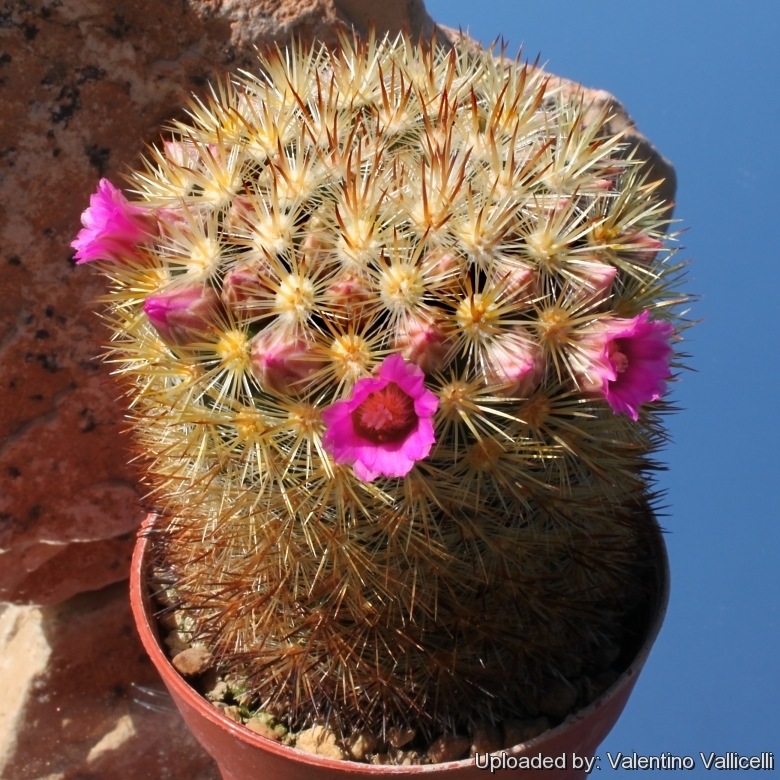
Escobariopsis laui subs. subducta (Mammillaria laui subs. subducta) Photo by: Valentino Vallicelli
Origin and Habitat: Between Ciudad Victoria and Jaumave, Tamaulipas, Mexico.
Altitude: Three known subspecies intergrade and merge in habitat at an elevation comprised between 800 to 1400 metres above sea level. The subs. laui (lacking distinct central spines) grows at moderate elevation, the subsp. subducta (with stout, white to yellowish central spines) occurs at lower elevations and the subsp. dasyacantha (with numerous, very slender, soft and flexible central spines occurs at much higher elevations.
Synonyms:
See all synonyms of Mammillaria laui
Description: Mammillaria lauiSN|11877]]SN|11877]] subs. subducta is a low growing cactus species usually forming big clusters or cushions, densely covered with bristly spines. It differs from the standard species for its noticeably, somewhat stout, white, yellowish or rusty-red central spines. (the other subspecies lack distinct central spines)
Stem: Depressed globose to globose or short oblong, to 6 cm tall and 4,5 cm in diameter.
Tubercles: Cylindrical, tubercle-axils almost naked or slightly woolly, without bristles.
Areole: Round, large, white felted.
Spines variable: All more or less similar or graded from central to radial, white, yellow or the central brown-tipped.
Radial spine: 35-60 or more, in several series, hairlike, stiff, white, 6-9 mm long.
Central spine: About 12, white to yellowish or rusty-red, 7-10 mm long, distinct, stouter and intergrading with the radials.
Flowers: Pink or carmine, to 15 mm long and 12 mm in diameter.
Blooming season: Spring.
Fruit: Cylindrical to club shaped, up to to 10 mm long, whitish or pale pink.
Seeds: Black.
Subspecies, varieties, forms and cultivars of plants belonging to the Mammillaria laui group
- Mammillaria laui D.R.Hunt: (subsp. laui) lacks distinct central spines, radial spines 35-60 or more, in several series, stiff. Distribution: Ciudad Victoria and Jaumave at moderate elevations (1000-1600m asl).
 Mammillaria laui f. cristata: Crested. It forms tangled brain-like, mound. There are several clones in cultivation with spines ranging from white or yellow to rusty red.
Mammillaria laui f. cristata: Crested. It forms tangled brain-like, mound. There are several clones in cultivation with spines ranging from white or yellow to rusty red. Mammillaria laui subs. dasyacantha (D.R.Hunt) D.R.Hunt: has numerous, very slender central spines, all spines soft and flexible. Distribution: it occurs at much higher elevations (1400-1700m asl).
Mammillaria laui subs. dasyacantha (D.R.Hunt) D.R.Hunt: has numerous, very slender central spines, all spines soft and flexible. Distribution: it occurs at much higher elevations (1400-1700m asl). Mammillaria laui subs. subducta (D.R.Hunt) D.R.Hunt: has up to 12 distinct, somewhat stout, white to yellowish central spines. Disribution: at lower elevations (around 800m asl) near Minas Asbestos, Ciudad Victoria, Tamaulipas.
Mammillaria laui subs. subducta (D.R.Hunt) D.R.Hunt: has up to 12 distinct, somewhat stout, white to yellowish central spines. Disribution: at lower elevations (around 800m asl) near Minas Asbestos, Ciudad Victoria, Tamaulipas.
Bibliography: Major references and further lectures
1) Edward Anderson “The Cactus family” Timber Press, Incorporated, 2001
2) James Cullen, Sabina G. Knees, H. Suzanne Cubey "The European Garden Flora Flowering Plants: A Manual for the Identification of Plants Cultivated in Europe, Both Out-of-Doors and Under Glass" Cambridge University Press, 11/Aug/2011
3) David R Hunt; Nigel P Taylor; Graham Charles; International Cactaceae Systematics Group. "The New Cactus Lexicon" dh books, 2006
4) John Pilbeam “Mammillaria: the cactus file handbook” Cirio Publishing Services Ltd Dec/30/1999
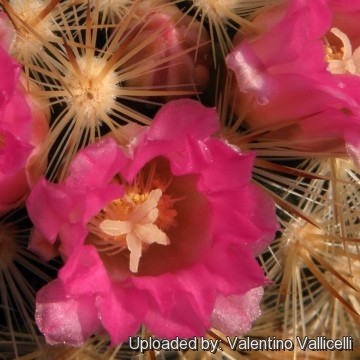 Escobariopsis laui subs. subducta (Mammillaria laui subs. subducta) Photo by: Valentino Vallicelli
Escobariopsis laui subs. subducta (Mammillaria laui subs. subducta) Photo by: Valentino Vallicelli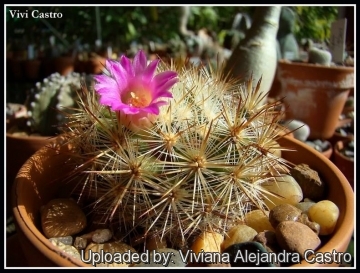 Escobariopsis laui subs. subducta (Mammillaria laui subs. subducta) Photo by: Viviana Alejandra Castro
Escobariopsis laui subs. subducta (Mammillaria laui subs. subducta) Photo by: Viviana Alejandra Castro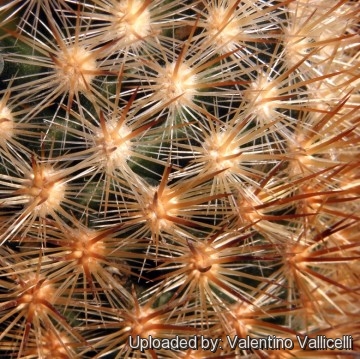 Escobariopsis laui subs. subducta (Mammillaria laui subs. subducta) Photo by: Valentino Vallicelli
Escobariopsis laui subs. subducta (Mammillaria laui subs. subducta) Photo by: Valentino Vallicelli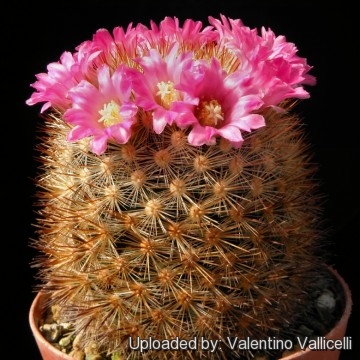 Escobariopsis laui subs. subducta (Mammillaria laui subs. subducta) Photo by: Valentino Vallicelli
Escobariopsis laui subs. subducta (Mammillaria laui subs. subducta) Photo by: Valentino Vallicelli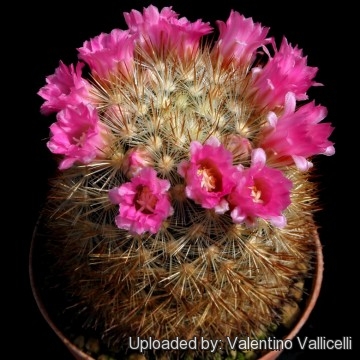 Escobariopsis laui subs. subducta (Mammillaria laui subs. subducta) Photo by: Valentino Vallicelli
Escobariopsis laui subs. subducta (Mammillaria laui subs. subducta) Photo by: Valentino Vallicelli Escobariopsis laui subs. subducta (Mammillaria laui subs. subducta) Photo by: Valentino Vallicelli
Escobariopsis laui subs. subducta (Mammillaria laui subs. subducta) Photo by: Valentino Vallicelli Escobariopsis laui subs. subducta (Mammillaria laui subs. subducta) Photo by: Valentino Vallicelli
Escobariopsis laui subs. subducta (Mammillaria laui subs. subducta) Photo by: Valentino Vallicelli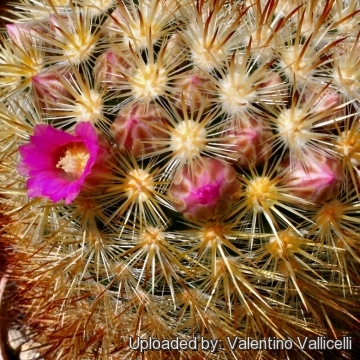 Escobariopsis laui subs. subducta (Mammillaria laui subs. subducta) Photo by: Valentino Vallicelli
Escobariopsis laui subs. subducta (Mammillaria laui subs. subducta) Photo by: Valentino VallicelliCultivation and Propagation: Mammillaria lauiSN|11877]]SN|11877]] subsp. subducta is an easy to grow species, just as a classic cactus, don't requires any special treatment, but need as much light as possible without burning the plant to encourage the heaviest spine formation. It is a great plant for the cactus grower, that readily builds up into a cluster of stems highlighted by dense spines, further decorated by rings of pink blooms.
Growth rate: It is a relatively rapid growing species. This is easily grown into clumps, but it does often have an irregular pattern of offsetting. Most plants will offset readily, and clumps can be produced in a few years.
Soils: It likes very porous standard cactus mix soil with little organic matter (peat, humus).
Repotting: Repotting every 2-3 years. As it is prone to rot under-pot in a smaller container filled with very porous compost. Use pot with good drainage.
Watering: Water regularly in summer, but do not overwater (very wet-sensitively). Its roots are easily lost in pots that stay damp for any length of time. Keep dry with ample airflow in winter. In the rest period no high atmospheric humidity!! Care must be taken with watering as they tends to become swollen and untidy in growth habit if given too much water and shade.
Fertilization: During the growing season enrich the soil using a fertilizer rich in potassium and phosphorous, but poor in nitrogen, because this chemical element doesn’t help the development of succulent plants, making them too soft and full of water.
Hardiness: It is quite frost resistant if kept dry, hardy as low as -5° C (some reports give it hardy to -12°C). However some warmth throughout the year will increase the grower's success (minimum 5° to 8°C during rest season).
Exposition: Outside bright sun, filtered sunlight or afternoon shade, inside it needs bright light, and some direct sun. Subject to sunburn if exposed to direct sun for too long. Tends to bronze in strong light, which encourages flowering and heavy spine production.
Uses: It is an excellent plant for container growing. It always looks good and stays small. It look fine in a cold greenhouse and frame.
Traditional uses: The white, hooked spines of this spherical cactus were used as fish hooks in its native Mexico.
Pests & diseases: It may be attractive to a variety of insects, but plants in good condition should be nearly pest-free, particularly if they are grown in a mineral potting-mix, with good exposure and ventilation. Nonetheless, there are several pests to watch for:
- Red spiders: Sensitive to red spider mite. Overhead watering is helpful in controlling mites.
- Mealy bugs: Occasionally mealy bugs they develop aerial into the new growth among the wool with disfiguring results, but the worst types develop underground on the roots and are invisible except by their effects.
- Scales: Scales are rarely a problem.
- Rot: Rot it is only a minor problem with cacti if the plants are watered and “aired” correctly. If they are not, fungicides won't help all that much.
Propagation: By division, or direct sow after last frost. Seeds germinate in 7-14 days at 21-27° C in spring, remove the glass cover gradually as the plants develops and keep ventilated, no full sun for young plants! The seedlings should not be disturbed until they are well rooted, after which they can be planted separately in small pots. Cuttings: wait until the offsets that appear at the base of old clustered specimens are 1/3 the size of the parent and then detach and plant. Cuttings will take root in a minimum temperature of 20° C (but better in hot weather). Cuttings of healthy shoots can be taken in the spring and summer. Cut the stem with a sharp, sterile knife, leave the cutting in a warm, dry place for a week or weeks (depending on how thick the cutting is) until a callus forms over the wound. Once the callus forms, the cutting may be inserted in a container filled with firmed cactus potting mix topped with a surface layer of coarse grit. They should be placed in the coarse grit only; this prevents the cut end from becoming too wet and allows the roots to penetrate the rich compost underneath. The cuttings should root in 2 to 6 weeks.



















